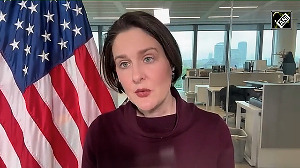When it came to marketing her Boston-based cosmetic dentistry practice, Helaine Smith chose to marry modern technology with an age-old principle: Sex sells.
Last March, Smith published Healthy Mouth, Healthy Sex!, a 19-page electronic book about how oral hygiene can lead to better sex. The free guide offers medical advice on everything from having oral sex with braces to the effects of gum disease on pregnancies.
In pictures:
Twelve innovative marketing techniques
Comeback companies
Since the book went live, Smith's name has careered around the Web. "When people Google me, all of this appears, and everybody says wow," says Smith. "It supports everything I do. I'm popping up all over the place."
Since ditching her $2,000-a-month Yellow Pages advertisement in 2002, Smith has become a modern-age marketing maven. She writes an e-newsletter and posts instructional videos on YouTube, covering topics from infection control to painless injections. Smith also writes on dental health for local newspapers. Result: Since 2002, annual revenues have tripled to $1 million, while her marketing budget hasn't grown a penny, she claims.
In pictures:
10 most effective sports advertisers
How to market your new idea
Getting the word out on the cheap is one of the greatest hurdles for aspiring small-business owners in any economic environment, let alone the troubled one we're in now.
"In times like this, people think the first thing to do is to cut back on marketing to save money," says guerrilla-marketing expert Jay Conrad Levinson. "But that's kind of like ditching your wristwatch to save time. A down economy is not a time to become low profile, or people will forget you."
In pictures:
Very small biz around the world
Levinson's contrarian philosophy: Double marketing outlays in tough times, to perhaps 8 per cent of projected gross sales from a more typical 4 per cent.
Better yet, get more out of your current marketing budget by exploiting technology. "Before the Web, we had to advertise in somebody else's media--magazines, billboards," says David Meerman Scott, viral-marketing strategist and author of The New Rules of Marketing and PR. "The Web allows you to tell your story directly."
Then again, you don't want to sell your story too hard out of the gate. "Most marketing campaigns fall down because they're specifically designed to sell products and generate leads," says Scott. A better plan: Back off the sell and amp up the entertainment.
Example: When Approva, a Reston, Va., financial-software company, wanted to grab the attention of bean-counter types at large companies, it made a snarky online video featuring a song celebrating Sarbanes-Oxley's fifth birthday. Approva's logo appears in the video, which it uploaded to YouTube, but at no point is there a hard sell. The video's production costs might have climbed to a few thousand dollars, but that's still a small investment relative to its potential reach on YouTube.
Bartering for exposure is another effective strategy. That's where all those trigger-happy bloggers come in.
By now everyone knows that the more people who link to a Web site, the higher it appears in Google's search results. With that in mind, ScanMyPhotos International, a Los Angeles-based shop that turns print photos into digital files, offered bloggers 1,000 free photo scans if they agreed to place a link to Scan's site on their blogs.
Result: Within two months, Scan's site leapt to the first search page when Google users entered the phrase "photo scanning." (Note: When using this technique, be sure to specify the text that bloggers use when linking to your site; choosing the right keywords is critical to getting the most out of the search engines.)
Along these lines, the rise of online networks plugged into specific local communities is a huge marketing opportunity for small businesses.
LifeAt.com, for example, allows users to post news, classified ads and restaurant reviews. The site keeps tabs on hundreds of "communities"--including specific apartment buildings and neighborhoods. Other sites that can help boost local visibility are Yelp.com, Insiderpages.com and Best of the Web.
Another option: Host a virtual tradeshow. While real tradeshow booths are an expensive hassle to set up and tear down, slapping up a virtual booth, or even running your own round-the-clock show, is virtually painless. The design software (available for free through the main tradeshow Web site) allows you to dress up your booth by importing your company logo and adding product shots and videos--and you don't need to be a computer-graphics wizard to use it.
The other nice thing about virtual trade shows: You can measure their performance. All site-builders offer data-reporting options, including registrants' contact information, what booths they "visited," which videos were watched and how much time each visitor spent at the site.
Cost? Show sponsors can charge exhibitors a fee, or give the booth space away for free and collect for any personal information gathered from visitors. Site builders like GoExhibit and ClickExpo charge sponsors around $50 a month to set up the show.
If you can, let others do your marketing for you. Three years ago, Chris Lindland, founder of Cordarounds, online peddler of pants with horizontal whales that go "around" the leg, had a clever viral marketing idea. He convinced the proprietors of the Black Horse pub, his favorite watering hole in San Francisco, to add Cordarounds as an item to its drink menu.
The trade: Lindland promised (by way of a biweekly email to customers) a free beer for all who dropped by the Black Horse wearing their Cordarounds. He only had to make good on that promise about once a month; meanwhile, hundreds of Black Horse customers ended up asking what the heck Cordarounds were.
If all else fails, take another hard look at the market and its willingness to pay for your product or service. Market surveys can cost up to $10,000, but there are some cheaper online options. Online surveys are easiest. Zoomerang charges $599 for a year subscription to its surveys service; Survey Monkey offers subscriptions starting at around $20 per month. Of course, for perhaps $100 in food and drinks, you could host your own focus groups too.
A final reminder for demanding entrepreneurs: Marketing strategies, no matter how innovative, take time to gain traction. "Most people look for instant results," says Levinson. "(But) no matter how good the offer is, it's not going to work in a hurry."







 © 2025
© 2025